| |
|
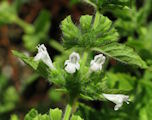 | |
| MaltaWildPlants.com by Stephen Mifsud |

|
| |
|
|
 |  |  |  |
| External Links: |
|
Bituminaria bituminosa (Pitch Trefoil) |

Bituminaria bituminosa (FABACEAE.)
Images for this profile are taken from the Maltese Islands after year 2000. |
|
| Nomenclature |
Species name : | Bituminaria bituminosa (L.) C.H.Stirt. | Authority : | Carl von Linne, Sweden, (1707 - 1778) ;
Charles Howard Stirton, South Africa, (1946 - ) | Synonyms :
(basionym or principal syn.) |
|
Plant Family : | Fabaceae Lindl. (= Leguminosae )
(Pea Family) | English name(s) : | Pitch Trefoil, Arabian Scurf Pea, Scurf Pea | Maltese name(s) : | Silla tal-mogħoż, Silla qatranija | Status for Malta : | Indigenous. Present on the Maltese islands before man | Name Derivation : |
Bituminaria: having the character of bitumen (pitch), with regards to some plants that have this odour. (Both Latin and Greek origin) ); 2 = New genus name for this plant replacing its old Psoralea; same derivation as bituminosa (see below);.
bituminosa: Having the odour of asphalt or bitumen, with reference to the odour emitted when leaves are crushed. (B ); 2 = Resembling bitumen - a sticky and tarry mixture used as cement or mortar in ancient times. Possibly refers to the fact that the leaves gives this tar-like odour of bitumen when crushed (Latin/Greek).
| Remarks : | |
|
| Morphology and structure |
PLANT STRUCTURE: |
Character | Growth Form | Branching | Surface |
Description | | | |
General
Picture |  | 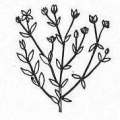 | 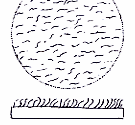 |
|
LEAVES: |
Character | Arrangement | Attachment | Venation |
Description | | | |
General
Picture |  | 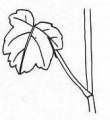 |  |
| |
Character | Leaf Shape | Leaf Margin | Remarks |
Description | | | Odour When crushed or stepped over, the leaves give off an asphalt-like smell also described as bitumen (Hence the Genus/species name = Bituminaria bituminosa). |
General
Picture | 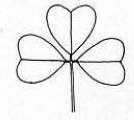 |  |  |
|
FLOWERS: |
Character | Colour | Basic Flower Type | No. of Petals | No. of Sepals |
Description | Violet With a lilac or whitish keel (lower petal). | | 5 1 upper standard, 2 lateral wings, and 2 bottom keels. | 1, Gamosepalous Sepals fused to form a calyx with an undivided structure. |
General
Picture | | 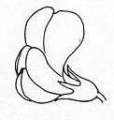 |  |  |
| |
Character | Inflorescence | Description | Ovary | Stamens |
Description | | Each flower has a tubular calyx with 5 teeth and a purple-violet zygomorphic corolla made up by the standard (upper and large violet petal), wings (x2, lateral, lilac or pale blue) and the keel (lower petal, lilac with a deep purple tip). Inside the keel lies the ovary and stamen tube. | | |
General
Picture |  |  | 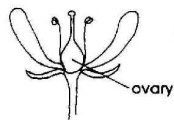 | 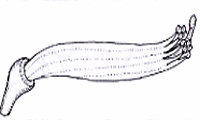 |
| |
Character | Scent | Average Flower Size | Pollen Colour | Other Notes |
Description | YES Faint sweet smell, often unnoticed or masked by the bitumen odour given by the leaves. | 6mm x 5mm x 15mm (length x breadth x depth including calyx). | Yellow | - |
|
SEEDS: |
Character | No. Per Fruit | Shape | Size | Colour |
Description | 1 | Ovoid | 5mm long (Including legume wall). | Brown The colour refers to the ripe legume wall since the seed is tightly fixed in the pod. |
General
Picture |  |  |  |  |
|
FRUIT AND OTHER BOTANICAL DATA: |
Character | Fruit Type | Colour of Fruit | Subterranean Parts | Other Notes |
Description | | Light Brown With sparse black specs (dots). | | Scent of Plant When leaves or stems are crushed, an odour of a substance called bitumen (somehow same as tar) is given off. |
General
Picture |  |  |  |  |
|
|
| Plant description and characters | |
Life Cycle: | Perennial. |
Growth Form: | THEROPHYTE (annual plants, herbaceous) |
Habitat: | Countryside paths, field tracks, waste ground especially near arable land. |
Frequency: | Very Common |
Localities in Malta: | Very Common throughout the arable lands of Malta and Gozo. Examples include Mistra, Fawwara, Dingli, Mtarfa, Siggiewi and most of Gozo. |
Plant Height: | 25-100cm. |
| Jan-Jun |
Protection in Malta: | Not legally protected till the last update of this website (2/Mar/2022) |
Red List 1989: | Not listed in the Red Data Book of the Maltese Islands |
Poison: | |
The plant is highly branched and it often assumes a bushy structure or a thick 'cushion' over walls. The stems are rather thin, pubescent (white short hairs), and they can attain a dark brown or black colour. Both leaves and flower heads have a long stalk, the latter always longer.
The leaves are trefoil, consisting of 3, rather similar lance-shaped leaflets. Each leaflet is sparsely hairy, has a smooth outline and pinnate venation, and often have few small black dots. The young leaflets are more elongated (narrow) than the mature ones and can reach a length up to 60mm. A characteristic feature which readily distinguishes the plant is the tar-like smell given off from crushed stems of leaves. The name of the plant 'bituminosa' refers to this bitumen (tar-like substance) smell it possesses.
In Malta, the plant starts flowering in January. It produces a group of 16-24 violet-blue flowers in semi-spherical heads held by a long peduncle growing from leaf-axils. The inflorescence is a packed raceme since individual flowers have a short pedicel. The lower bracts are flap-like with 3 elongated teeth. The calyx of each flower is a tube (about 12mm long) with 5 unequally long teeth. The calyx also has thin longitudinal black streaks.
As in almost all Fabacea species, the flower's petals consist of a standard, 2 wings and a keel. The oval shaped standard (10-12mm long) is the most colourful (purple-violet) of the petals and has 2 small dark markings at its centre (not visible unless uncovered). The 2 wings are lilac to pale blue and are about 7mm long. The keel consists of 2 flat structures which have the middle and inner part white or lilac and have 2 large dark purple blobs at the outer end. Inside the keel there are the reproductive organs of the flower. There is an elongated and curved up ovary with a cluster of monodelphous tiny stamens. These have their yellow anthers just near the tip of the ovary that is the stigma.
The fruit is a one-seeded indehiscent legume. Seed nearly spherical and dark brown, about 5mm in size.
|
|
| Information, uses and other details |
Nativity and distribution
The distributional range of this plant is shown in the list below: [WWW-26]
Northern Africa: Algeria [n.]; Libya [n.] ; Morocco; Tunisia
Western Asia: Egypt - Sinai; Israel; Jordan [w.] ; Lebanon; Syria [w.] ; Turkey
Caucasus: Georgia; Russian Federation - Ciscaucasia
Europe: Portugal (incl. Madeira Islands); Spain (incl. Canary Islands, Baleares); Ukraine (incl. Krym); Cyprus; Albania; Bulgaria; Greece (incl. Crete); Italy (incl. Sardinia, Sicily); Romania; Yugoslavia; France (s. & Corsica);
Bituminaria bituminosa as a fodder and its nutritional value
B. bituminosa is a nitrogen-fixing perennial legume used (after cutting and drying) as a forage plant in the Canary Islands. However, its productivity is limited by cold winters and summer droughts. [363] Another report confirms this which states that B. bituminosa is traditionally used in fresh form or as hay, as a forage for feeding goats in the Canary Islands. It is frequently used as feed, very little research has been carried out to determine its nutritive value [366] .
The nutritive value of one forage shrub from the Canary Islands, Bituminaria bituminosa, was studied [365]
Mean results of four cuts along the year were
910g kg-' DM as organic matter (91.0%)
424g kg-' DM as neutral detergent fibre (42.4%)
184g kg-' DM as protein content (18.4%)
Goat ruminal degradability of organic matter and protein was respectively 57.5% and 72.2% for B. bituminosa. In vitro digestibility of organic matter was 64.6%. From these results, the energy value of B. bituminosa was estimated, according to the NRC system, to be respectively, 5.6 MJ NE kg-' DM [365]
The results of this study show that Bituminaria bituminosa species are legume shrubs with
a protein and energy content similar to a low quality alfalf. However, some
authors have reported that this forage can contain antinutritional substances (flavonoids, coumarins, etc) which could limit its intake (read more...). [366]
The herbaceous plant Bituminaria bituminosa is the major food item in the diet of adults of Gallotia simonyi, Giant Lizard of El Hierro in the Canary Islands. [364] .
Medicinal Uses
The plant has the following medicinal properties according to reference: [WWW-03] .
| Emmenagogue |
Used to promote the menstrual discharge. [WWW-32] |
| Tonic |
A medicine that strengthens and invigorates hence restores normal tone to tissues or to stimulate the appetite. [WWW-32] |
Recent studies have shown that this plant has an important constituent called Psoralen which is of a certain medicinal importance [362] . Psoralen is the effective ingredient extracted from a Chinese herb, bu gu zhi? ? ? (Psorales corylifolia, L.), also known as po gu zi ? ? ?. This is used to increase melanin in the skin and so can be employed in treating vitiligo, bald patches of hair, and psoriasis. [WWW-146]
Use of Psoralens to treat psoriasis
Psoralens make the skin more sensitive to light. These drugs have no effect unless carefully combined with ultraviolet light therapy. This therapy, called PUVA, uses a psoralen drug with ultraviolet A (UV-A) light to treat psoriasis. This treatment is used when psoriasis is severe or when it covers a large area of the skin. Psoralens are taken by mouth several hours before PUVA therapy or sunlight exposure. They are also available as creams, lotions, or in bath soaks. More than 85% of patients report relief of disease symptoms with 20-30 treatments. Therapy is usually given 2-3 times per week on an outpatient basis, with maintenance treatments every 2-4 weeks until remission. Adverse effects of PUVA therapy include nausea, itching, and burning. These drugs cause sensitivity to sunlight, risk of sunburn, skin cancer, and cataracts. [WWW-144]
Psoralen Photochemotherapy to treat vitiligo
Psoralen photochemotherapy (psoralen and ultraviolet A therapy, or PUVA) is probably the most beneficial treatment for vitiligo available in the United States. The goal of PUVA therapy is to repigment the white patches. However, it is time-consuming and care must be taken to avoid side effects, which can sometimes be severe. Psoralens are drugs that contain chemicals that react with ultraviolet light to cause darkening of the skin. The treatment involves taking psoralen by mouth (orally) or applying it to the skin (topically). This is followed by carefully timed exposure to ultraviolet A (UVA) light from a special lamp or to sunlight. Patients usually receive treatments in their doctors' offices so they can be carefully watched for any side effects. Patients must minimize exposure to sunlight at other times. [WWW-145]
Tradition use of Psoralea species in Medicine.
Psoralea. Of this genus (Fam. Leguminosae) various species are useful. The tubers of P. esculenta L. (more) are employed by the Indians of the Northwestern United States, and by the settlers, as articles of food, being the prairie turnip or prairie potato, the tipsinah and taahgu of the Indians. C. Richardson found in it nearly 70% of starch, and 5% of a new, rapidly crystallizing sugar, which has not been further investigated.
P. glandulosa L. (more), culen, yolochiahiti, of the Mexican Pharmacopoeia, yields a leaf which is used as a tonic or anthelmintic, and an emetic root. P. bituminosa L. (more), of Europe, and P. physodes Dougl. (more), of California, are popularly considered tonic and emmenagogue, the former being presented under the name of Herba Trifolii Bituminosi. P. pedunculata (Mill.) Vail. (more) (P. melilotoides Michx.) (Congo root, Bob's root, Samson's snakeroot), of Virginia, has been recommended as an aromatic bitter tonic, especially useful in chronic diarrhea.
The part employed is the root, from which MacNair obtained about 2% of a volatile oil, having the specific gravity 0.93, a pungent and bitter taste, and a neutral reaction; also a bitter principle, but not tannin. For further description, see A. J. P., July, 1889; also 14th and 16th editions of U. S. D. P. corylifolia L. (more), of India, yields an oleoresin which is used in the treatment of leucoderma and other skin diseases. (P. J., Sept., 1881.) Mann and Griffiths obtained from the seeds of P. coryfolia 13.7 per cent. of a thick brownish oil and 37.2 per cent. of an alcoholic extract which yielded by purification 9.2 per cent. of a resinoid. (P. J., 1912, 260.) [WWW-18]
Other Uses
1) The plant is able to stabilise degraded soils. [363]
2) Have a possible role in phytoremediation of heavy metal-contaminated soils. [363]
3) Important for its furanocoumarins content (used in cosmetics and photochemotherapy), and its iso-flavanoid derivatives, which have anti-clastogenic activity. [363]
Volatile constituents of different organs of Psoralea bituminosa L.
The essential oil and SPME samples of the leaves, flowers and seeds of Psoralea bituminosa L. were analysed by GC and GC-MS. We have investigated also the presence of monoterpene or aliphatic alcohol glucosides. The essential oils showed both qualitative and quantitative differences.
The main constituents of the leaf and the flower essential oils were:
- Caryophyllene (23% and 18%, respectively),
- Farnesene (15% and 6%, respectively), and
- Germacrene D (24% and 18%, respectively).
Significant amounts (7%) of the same compounds were also directed in the seed essential oil, but tricyclene (11%) and -pinene (50%) were the most important constituents of this oil.
The volatile fractions of remaining leaf aqueous extracts after treatment with -glucosidase revealed qualitative differences in comparison with the composition of the corresponding essential oils, and high levels of 3-hexen-1-ol (37%) and 1-octen-3-ol (27%) were observed.
The SPME analysis of the fresh leaves, flowers and seeds of P. bituminosa confirmed the qualitative composition of the volatile oils, even if we detected significative differences in the percentage ratio between monoterpenes and sesquiterpenes in comparison with the oils, where sesquiterpenes were the main components. In fact the variation of the monoterpenes, tricyclene, -pinene and camphene between the leaf oil and the corresponding headspace sample was remarkable: tricyclene increased from 0.1% to 8%, -pinene from 0.1% to 16% and camphene from 0.3% to 10% in the SPME samples. [361]
Recovery of Furanocoumarins from Psoralea bituminosa
The occurrence of bound coumarin derivatives in the Fabaceae has already been demonstrated. In an attempt to determine the yield of furanocoumarins following exhaustive recovery from Psoralea bituminosa, three different hydrolytic procedures have been employed. Method 1 involved the methanolic extraction of plant material followed by acid hydrolysis of the remaining plant material; methods 2 and 3 involved preliminary hydrolysis by acid or enzyme, respectively, followed by solvent extract. The lowest furanocoumarin recovery was obtained using the first extraction procedure, whilst the highest was obtained using the extraction procedure with enzymatic hydrolysis of bound forms (method 3). The linear isomer psoralen is more effectively recovered by the specific enzymatic hydrolytic method, with an average increase of the psoralen:angelicin ratio of about 20%. Although the preliminary acid hydrolysis (method 2) is less effective than the enzymatic one, it is a faster and less expensive procedure and it could be suitable and profitably used for extracting furanocoumarin from plant material on a large scale. [362]
Growth in polluted soil and Germination of Bituminaria bituminosa
The growth of Bituminaria bituminosa in heavy metal-contaminated soils in southern Spain (Murcia) were studied. This species could be useful for restoration of contaminated land because it does not accumulate high metal levels in its shoot. On a practical level, germination of the seeds of this species is improved by scarification or,especially, by placing the seeds in boiling water - which is then allowed to cool. After 15-20 hours the seeds can be removed from the water and sown. Reference: Walker, DJ et al. (2007), Water, Air and Soil Pollution vol. 184, pp. 335-345
Some notes about Bitumen
Bitumen is a category of organic liquids which are highly viscous, black, sticky and wholly soluble in carbon disulfide. Asphalt and tar are the most common forms of bitumen.
In British English, 'bitumen' is often used interchangeably with both 'asphalt' and 'tar'. In American English, 'bitumen' is most commonly used in engineering jargon to explicitly include both asphalt- and tar-based materials. In Australian English, 'bitumen' is used as the generic term for road surfaces.
Bitumen in the form of asphalt is obtained by fractional distillation of crude oil. Bitumen being the heaviest and being the fraction with the highest boiling point, it appears as the bottommost fraction.
Bitumen in the form of tar is obtained by the destructive distillation of organic matter, usually coal.
Bitumen is primarily used for paving roads. It is also the prime feed stock for petroleum production from tar sands currently under development in Alberta, Canada.
In the past, bitumen was used to waterproof boats, and even as a coating for buildings; it is possible, for example, that the city of Carthage was easily burnt down due to extensive use of bitumen in construction.
Vessels for the heating of bitumen or bituminous compounds are usually excluded by public liability insurance policies.
Most geologists believe that naturally occurring deposits of bitumen are formed from the remains of ancient, microscopic algae and other once-living things. These organisms died and their remains were deposited in the mud on the bottom of the ocean or lake where they lived. Under the heat and pressure of burial deep in the earth, the remains were transformed into materials such as bitumen, kerogen, or petroleum.
A minority of geologists, proponents of the theory of abiogenic petroleum origin, believe that bitumen and other hydrocarbons heavier than methane originally derive from deep inside the mantle of the earth rather than biological detritus. [WWW-60]
Personal Observations
Some notes about Bitumen
When the leaves or particularly the stems of the plant are crushed or bruised a peculiar odour of bitumen (asphalt like substance) is given off. Due this characteristic, the Genus and species name Bituminaria bituminosa was given to the plant. [SM] Originally, the plant was called Psoralea butiminosa by Linne`, but possibly, other closely related Fabaceae plants that had this particular Bitumen smell where placed in an own genus named Bituminaria. A speculation that needs more confirmatory study! [SM]
|
|
| | |

